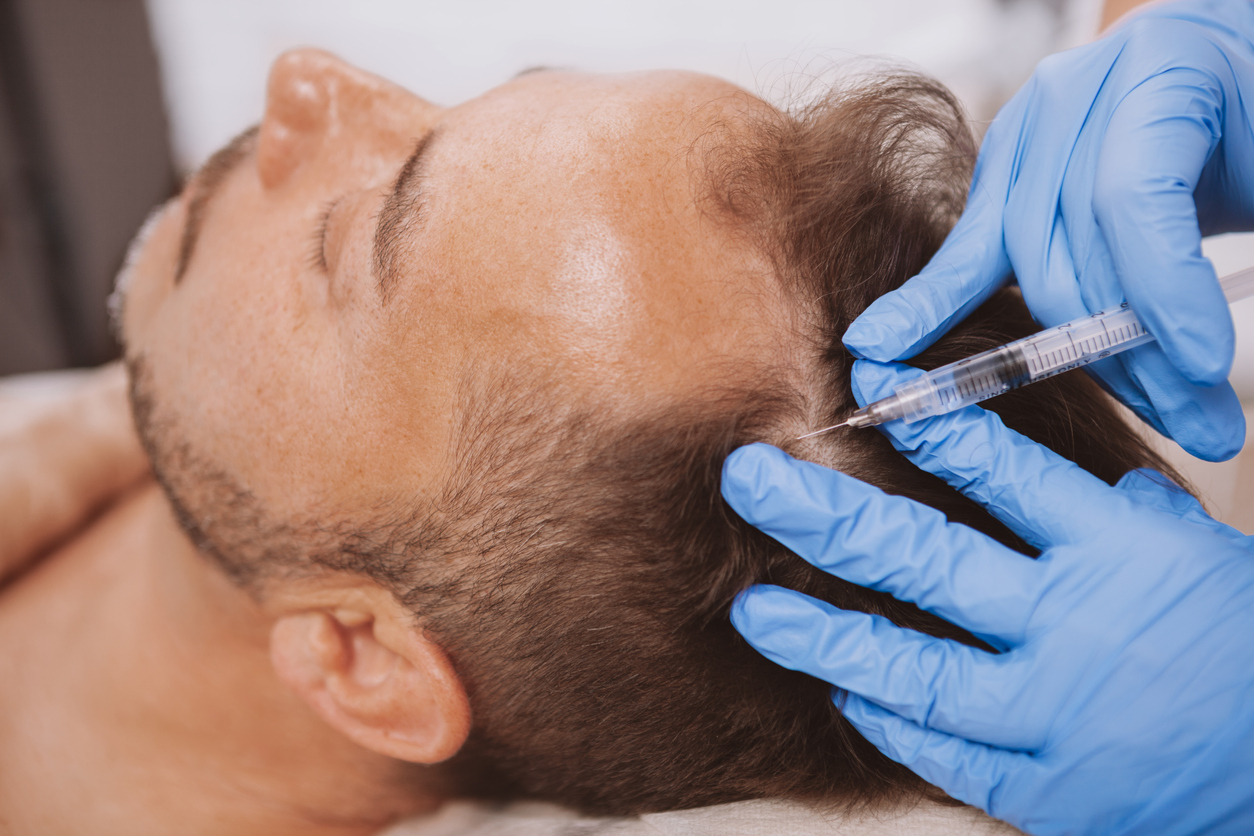PRP is liquid gold for hair loss

Commonly known as the Vampire Facial, PRP (Platelet Rich Plasma) has been a popular non-surgical facial treatment for years, using the patient’s own blood to facilitate skin rejuvenation, stimulating tissue regeneration and repair and improving texture and volume, writes Mala McAlpin.
Nowadays it is particularly prevalent in its use on tear troughs. But on the rise is another use for the ‘liquid gold’ that is Platelet Rich Plasma – used on the scalp to stimulate hair growth. It’s a treatment that is popular for males experiencing pattern baldness or receding hairlines, but is also suitable for any male or female clients concerned about hair thinning, loss or shedding and who aren’t ready to commit to invasive solutions like hair transplants.
Contour Clinics is one Sydney-based aesthetic clinic that has discovered the procedure’s positive results first-hand, and has been treating patients with thinning hair for around a year. Medical director Dr Josh Wall says his clientele for the service continues to grow, and that since the results are even more impressive and visible than PRP on the face, he can understand why.
“Platelets are the first cell to the scene of an injury. They’ll help to clot but they’ll also release growth factors – circulating around in our blood, there are around 100-200,000 platelets per ml. When I concentrate it in the centrifuge, I get it up to 1.2-1.5 million platelets per ml, so we’re getting around 10 times the amount of healing products than we would normally. In terms of hair growth, we’ve had some amazing results. It’s usually a three treatment course, spaced roughly one to two months apart.”
The treatment process at Contour Clinics is carried out much the same as that of a PRP facial – 60ml of blood is taken from the client, which is then spun in a centrifuge – Emcyte being Contour Clinics’ device of choice – to receive the concentrated platelets. The entire treatment takes around 30 minutes, which is primarily spent in the setup and centrifuge preparation. Before, images are taken, of course, and a small amount of anaesthetic is applied during the centrifuge cycle.
The injecting only takes around one to two minutes, with the PRP administered directly on and around the sites of thinning and hair loss, particularly the hairline and crown. Client discomfort, Josh tells us, is usually minimal. Large lumps are visible for only moments at the injection site before dissipating in a few short minutes. There is no downtime – clients can simply expect to be a little tender and avoid washing their hair or swimming within the first two days. Results can be seen around three to six months after treatment.
“Feedback has been pretty good,” says Josh. “I’m always sceptical of these kinds of treatments, particularly because it does take quite a while, but all the feedback I’ve had has been amazing for hair. For facials, it can be hard to see (as it’s usually done in combination with lots of other things) whereas for hair, I get really good results.”
For more Professional Salon news and updates, subscribe to our newsletter.
